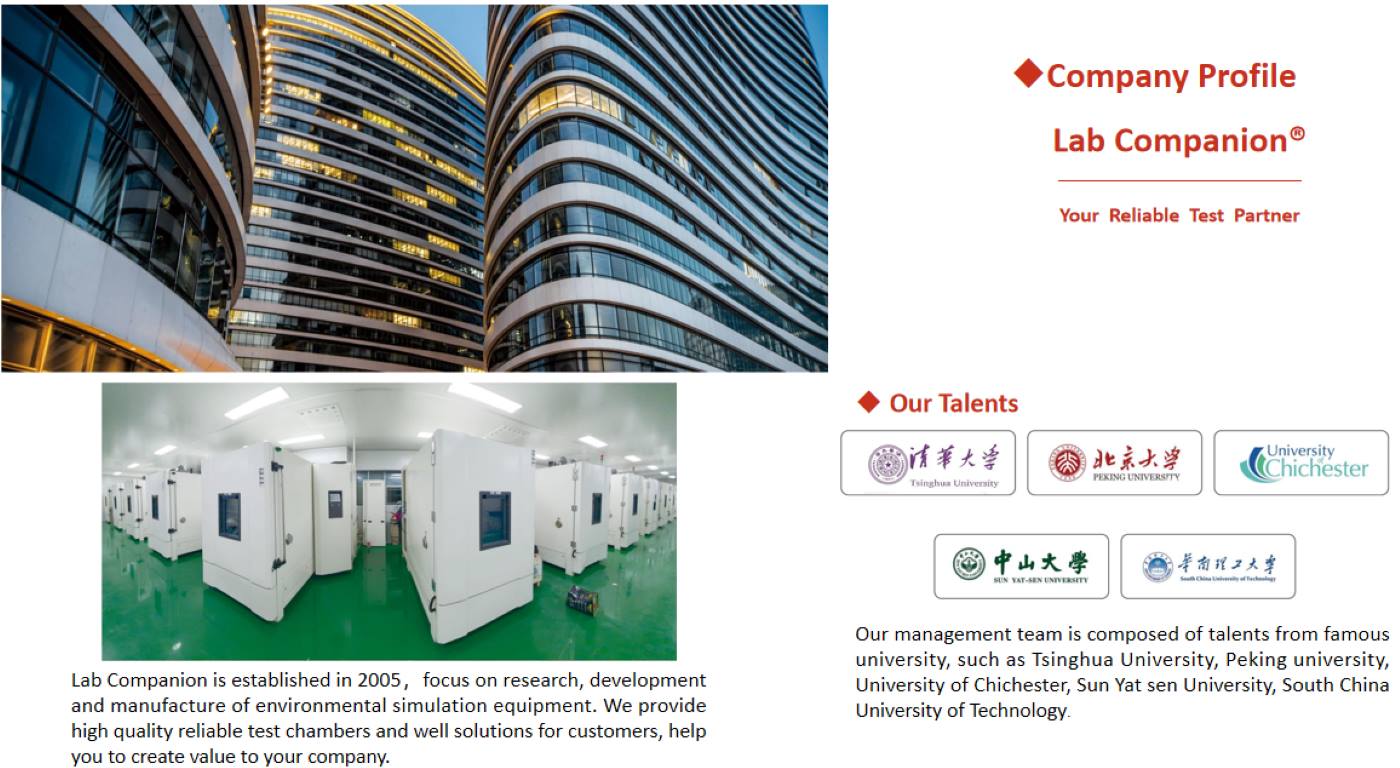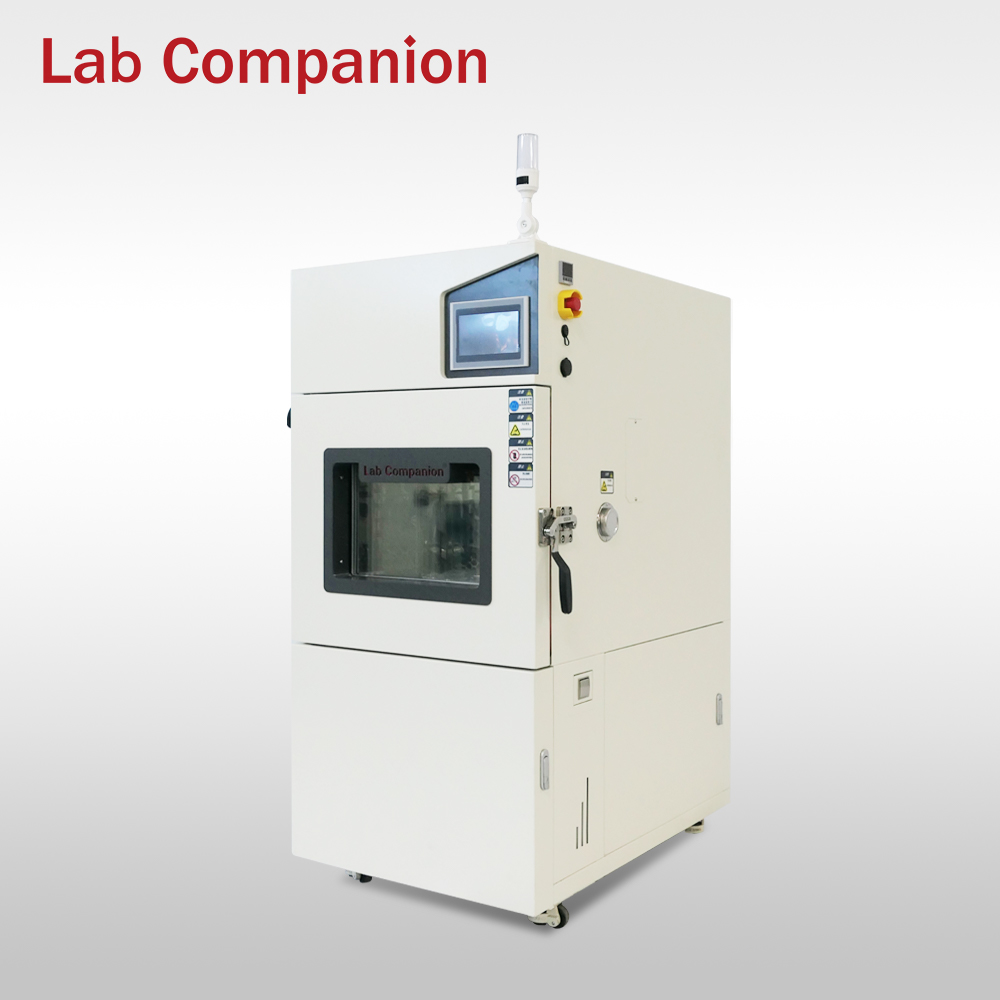 กระบวนการปรับแต่งกล่องทดสอบที่ไม่ได้มาตรฐานมีอะไรบ้าง
กระบวนการปรับแต่งกล่องทดสอบที่ไม่ได้มาตรฐานมีอะไรบ้าง
Jun 20, 2025
1. สื่อสารกับผู้ผลิตโดยตรงเพื่อปรับแต่งข้อกำหนด ขั้นตอนการดำเนินงาน:การส่งข้อกำหนด: เคลียร์วัตถุทดสอบ (เช่น ไฟหน้า แบตเตอรี่ เซ็นเซอร์ ฯลฯ) สถานการณ์การทดสอบ (เช่น การจำลองการลุยน้ำในอุณหภูมิต่ำมาก การฉีดพ่นอุณหภูมิสูงและแรงดันสูง) และข้อกำหนดของอุตสาหกรรม (เช่น ยานยนต์ ทหาร อิเล็กทรอนิกส์)การเชื่อมต่อเทคโนโลยี: ให้พารามิเตอร์ของผลิตภัณฑ์ (ขนาด น้ำหนัก) สภาพแวดล้อม (ช่วงอุณหภูมิ ความถี่ในการกระแทก) และข้อกำหนดพิเศษ (เช่น การทดสอบการซ้อนทับของสเปรย์เกลือ การปรับมุมแบบไดนามิก)การยืนยันโครงการ: ตามมาตรฐานทั่วไป เช่น GB, IEC และ GJB และข้อกำหนดอุตสาหกรรม เช่น VW 80101 และ ISO 16750 ผู้ผลิตออกแบบขั้นตอนการทดสอบที่กำหนดเองและแผนการกำหนดค่าอุปกรณ์2. ปรับให้เข้ากับกรอบมาตรฐานที่มีอยู่ผู้ผลิตสามารถขยายหรือปรับเปลี่ยนได้ตามเกณฑ์ต่อไปนี้: มาตรฐานแห่งชาติ:GB/T 28046.4-2011: สำหรับการทดสอบภาระสภาพอากาศของอุปกรณ์ไฟฟ้ายานยนต์ จะมีการกำหนดพารามิเตอร์หลัก เช่น อุณหภูมิ เวลา และเวลาหมุนเวียนของผลกระทบจากน้ำแข็งGB/T 2423.1: ข้อกำหนดการทดสอบสิ่งแวดล้อมสำหรับผลิตภัณฑ์ไฟฟ้าและอิเล็กทรอนิกส์ทั่วไป รองรับการออกแบบกระบวนการสอบเทียบและการตรวจยืนยัน หลักปฏิบัติ:VW 80101-2005: มาตรฐานการทดสอบส่วนประกอบไฟฟ้าของ Volkswagen ที่ใช้ได้กับการปรับปรุงพารามิเตอร์ต่างๆ เช่น แรงดันการพ่นและความแม่นยำของอุณหภูมิน้ำGMW3172: มาตรฐานวิศวกรรมระดับโลกของ General Motors รองรับการทดสอบแบบผสมหลายสภาพแวดล้อม (เช่น แรงกระแทกจากน้ำแข็ง + การกัดกร่อนจากละอองเกลือ)ISO 16750-4:2006: กรอบการทำงานการทดสอบอุปกรณ์ไฟฟ้ายานยนต์ร่วมระดับสากล เข้ากันได้กับรอบที่กำหนดเอง (เช่น มาตรฐาน 100 หรือปรับปรุง 200)สาม ปรับปรุงมาตรฐานโดยใช้ทรัพยากรทางเทคนิคของผู้ผลิตการปรับพารามิเตอร์แบบยืดหยุ่น:ช่วงอุณหภูมิ: ช่วงอุณหภูมิสูงมาตรฐาน 65~160℃ สามารถขยายได้ถึง -70℃ ถึง +150℃ระบบสาดน้ำ: รองรับการไหล (3~4L/3S หรือ 80L/นาที), ระยะทาง (ปรับได้ 325±25 มม.), ประเภทหัวฉีด (ช่องว่าง/เมทริกซ์) และการปรับแต่งอื่นๆการควบคุมอัจฉริยะ: ระบบ PLC สามารถปรับแต่งอัตราการสลับอุณหภูมิได้ (เช่น 20 วินาทีในการแปลงจากอุณหภูมิเย็นจัดไปเป็นอุณหภูมิสูง) ความถี่ในการรับข้อมูล และรูปแบบรายงานการซ้อนทับโมดูลฟังก์ชัน:รองรับข้อกำหนดการทดสอบต่างๆ เช่น กันน้ำ (IPX5-6) และกันฝุ่น (IP5X-6X)รองรับการพ่นมุมแบบไดนามิก (ปรับได้ 15 ~75) การทดสอบคอมโพสิตการพ่นเกลือ และการจำลองฉากที่ซับซ้อนอื่นๆ4. รับรองการปฏิบัติตามโดยผ่านการรับรองและการตรวจสอบการสอบเทียบอุปกรณ์: ผู้ผลิตจัดให้มีบริการสอบเทียบเซ็นเซอร์อุณหภูมิครึ่งปี โดยควบคุมข้อผิดพลาดได้ภายใน ±2℃การตรวจสอบจากบุคคลที่สาม: ขอแนะนำให้รับรองอัตราการเปลี่ยนแปลงอุณหภูมิ ความสม่ำเสมอ และตัวบ่งชี้อื่นๆ ของอุปกรณ์ที่กำหนดเองผ่านสถาบันตรวจสอบคุณภาพ (เช่น สถาบันวิจัยพลังงานไฟฟ้าจีน ไซต์ทดสอบ FAW)การติดตามข้อมูล: ห้องทดสอบรองรับการส่งออกบันทึกการทดสอบผ่าน USB ซึ่งสะดวกสำหรับการติดตามคุณภาพและการวนซ้ำมาตรฐาน5. การสนับสนุนบริการและการอ้างอิงกรณีทีมงานด้านเทคนิค: Guangdong Hongzhan ร่วมมือกับมหาวิทยาลัยและสถาบันวิจัยเพื่อให้การสนับสนุนกระบวนการทั้งหมดตั้งแต่การวิเคราะห์ความต้องการจนถึงการนำมาตรฐานไปใช้การเรียกใช้ไลบรารีเคส: คุณสามารถอ้างอิงเคสของบริษัทผลิตรถยนต์ (เช่น การทดสอบ IPX9K ของชุดแบตเตอรี่ 800V การตรวจสอบวงจรเย็นและร้อนของหลอดไฟอัจฉริยะ) เพื่อเพิ่มประสิทธิภาพและปรับแต่งมาตรฐานการรับประกันหลังการขาย: อุปกรณ์ที่ปรับแต่งได้จะได้รับการรับประกัน 1 ปี และการบำรุงรักษาถึงประตูบ้านเป็นเวลา 48 ชั่วโมงเพื่อให้แน่ใจถึงความเสถียรของการใช้งานมาตรฐาน
อ่านเพิ่มเติม




